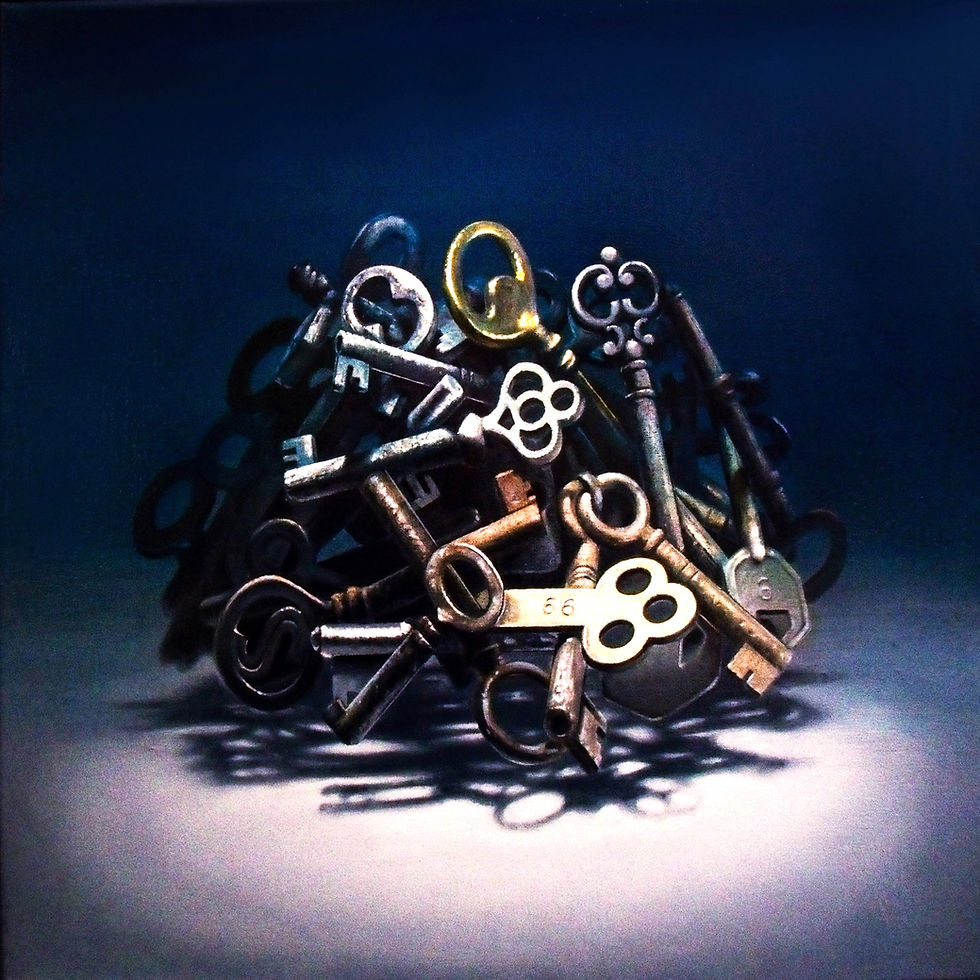Who you gonna believe..?
- Phil McLoughlin

- May 5, 2020
- 4 min read
Updated: May 16, 2020

Some years ago the Spectator art critic, Andrew Lambirth, writing about David Hockney's Royal Academy show, noted that:
“a great many people visited (the exhibition) and came out smiling and uplifted. They tended to be individuals who don’t usually go to exhibitions or look at real (sic) painting , and it may thus be said that they had very little idea of what they were actually looking at, or indeed should be looking for in an exhibition of painting, but if the experience made them happy, where's the harm - you may ask - in that."
I have been visiting all sorts of exhibitions since my youth and Lambirth set me wondering: am I someone who has 'little idea of what they are looking for' in an exhibition of paintings? It never occurred to me that I might need a qualification to visit an exhibition. Who would decide if I was adequately prepared to be allowed entry? How would anyone ever know? Nest step - taking a test before entering the British Library. Unsophisticated types like me should pay less for entry since we are bound to gain so much less from the experience.
Perhaps there only two kinds of people who try to 'appreciate' art – the critic and everyone else, and we should not forget the cultural poseurs, like Frasier and Niles. That said, some critics are clearly worth reading or listening too. They make interesting, amusing or informative observations. They may even stimulate others to think but their main objective is to tell us what they think and to parade their good taste and wisdom. As a profession of sorts, criticism may not be entirely without honour but it is just another opinion – however, well articulated.
The critic’s performance is just another arm of the entertainment industry no different from the judge on Britain's Got Talent or The Voice? They offer their appraisal which can make or break an artist's career. In rare circumstances a bad critique might benefit an artist. The Brit-Art crowd (Hirst, Emin et al) were lifted by Brian Sewell's savage dismissal of their lack of talent. As the enfant terribles of day the disapproval of a dinosaur critic proved invaluable. But they also had Saatchi behind them, so could have rode out any critical storm.
It is astonishing how many playwrights, novelists and artists view critics - whether generous or contemptuous - as scavengers. Without the art the critic need not – indeed cannot - exist. Brendan Behan spoke for many when he said:
“Critics are like eunuchs in a harem; they know how it’s done, they’ve seen it done every day, but they’re unable to do it themselves”.
A favourite pastime of critics is 'pigeon-holing' artists: surrealist, pop, Dadaist etc. Jasper Johns was one of many who resented such casual classification. Johns shunned membership of clubs, groups or movements and followed his own path. Over time, he developed a deep resentment towards critics who wanted to put him into one fold or another. His lead sculpture "The critic smiles" - one of several works that targeted critics - depicted a toothbrush with human teeth instead of bristles. John Yau thought this symbolized: "the critic as a kind of civilized cannibal whose job is to clean up the art being looked at, while tearing it into pieces". Johns saw the relationship between art critic and art "as a power struggle in which the critic is a parasite who lives off art rather than illuminates it".
Johns and Behan may have been separated by an ocean but clearly were drinking from the same cup.
It is bewildering how so much modern/contemporary art seems to rely on critics to function. Books become 'best sellers' and pieces of music 'hits' because people like them, enjoy them, appreciate them and usually buy them after sampling a few pages or bars. Sales and popularity may be helped by endorsements from critics (or 'celebrities') but artists who become 'stars' - from Shakespeare to Elvis - are the product of a People's Vote.
Contemporary art audiences belong to a peculiar cultural wasteland. Most need critics to explain, classify, decode and translate the 'art' before they even buy the admission ticket. There will always be some 'innocent' gallery visitors, who just go to 'have a look' and judge the work for themselves. In so doing they dispense with the need for people like Lambirth, which may well be a big part of his patronising view of such audiences. But many gallery visitors will read the reviews and buy the catalogue before entering the show. Arguably, they never actually experience the work. They are denied the opportunity to make their own mind up about the meaning of the 'sound of fingernails scratching on a blackboard' or a light going on and off in a room. Instead, they see, feel and think a version of what they have been told is there. Such is the nature of authority or groupthink -and the enduring wisdom of the Emperor's New Clothes.
l am not sure why visitors to an art exhibition - or indeed the consumer of any form of 'art' - need to be led by the hand (or ear). At least the adults must have some capacity to judge whether a 'piece' moves them emotionally (for good or ill); causes them to think; or otherwise shifts them into a different gear of experience. Despite what the critic might have to say one is left wondering, as Chico Marx said: "who you gonna believe, me or your own eyes?"
Copyright - Phil McLoughlin 2020.




Comments